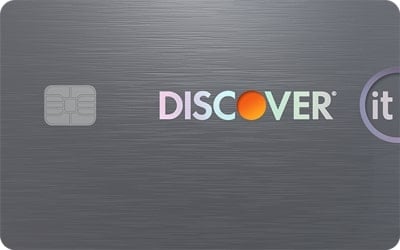5 Things to Know About the U.S. Bank Secured Visa
The no-flash, no-rewards secured card can help consumers build credit or bounce back from past mistakes.

Many or all of the products on this page are from partners who compensate us when you click to or take an action on their website, but this does not influence our evaluations or ratings. Our opinions are our own.
If you're looking for a no-frills secured credit card to help you build or rebuild your credit, the U.S. Bank Secured Visa is a decent option. The biggest hurdle is scraping together the cash for the required deposit.
Here are five things to know about the U.S. Bank Secured Visa:
1. You’ll have to pay some cash upfront
As its name indicates, the U.S. Bank Secured Visa is a secured credit card. This means you have to put down a refundable security deposit — in this case a minimum of $300 — to open your account. Generally, the amount you deposit will be equal to your credit limit.
While the minimum deposit required will vary by card, many typically require only a $200 minimum deposit. If pulling together the cash for a security deposit as high as $300 is a challenge for you, there are less costly options. The Capital One Platinum Secured Credit Card, for example, allows some applicants to qualify for a $200 credit line with a deposit as low as $49. Plus, if you can't come up with the full amount upfront, you can opt to pay for it in installments before card activation.
On the other hand, with a maximum deposit — and maximum credit line — of $5,000, the U.S. Bank Secured Visa can be a good option for those who can afford to put down a relatively high sum of cash. Many secured cards limit you to a maximum deposit of $1,000 to $2,000. The higher your credit limit, the easier it is to maintain low credit utilization, which is a major factor in your credit score.
Note that after you’ve had your U.S. Bank Secured Visa card for six months, you can submit a written request for a higher credit limit on the card. To qualify for an increase, your card must be in good standing and your total credit line must stay below the card’s maximum of $5,000. Keep in mind that requesting a limit increase may trigger a hard pull on your credit report.
2. You won’t earn any rewards
If you use a secured card responsibly to build credit, you typically won't spend enough or carry it long enough to rack up meaningful rewards, so the lack of a rewards program on this card is hardly a serious demerit. Still, if rewards are what you’re after, you’ll want to look elsewhere.
As an alternative, consider the Discover it® Secured Credit Card, which earns 2% cash back at gas stations and restaurants on up to $1,000 in combined purchases every quarter, and 1% back on all other spending. The $0-annual fee card also comes with a welcome bonus and an automatic process to review your account for a potential upgrade.
3. The card doesn't charge an annual fee
The U.S. Bank Secured Visa card’s $0 annual fee is one of its most notable features. Many secured cards do charge you annually, which can make them difficult to manage and carry. Ideally, you should opt for a card with a $0 annual fee, or at least one with a low and manageable yearly cost — especially if it's a secured card with no ongoing rewards or additional perks.
4. It offers a flexible billing due date
With the U.S. Bank Secured Visa, you’ll be able to choose your own payment due date — to an extent. The issuer notes that "not all payment due dates may be available." So while you might not get the specific day you want, you may be able to move your date from, say, the middle of the month to the beginning. You can call the customer service number on the back of your card to find out which dates are available.
While some issuers may be willing to change your credit card's due date upon request, it's not always a guarantee that they will do so. Being able to adjust your due date to a more convenient time of the month can make paying your bill easier and more manageable.
5. You’ll be able to graduate to a better card
After 12 months, U.S. Bank will consider upgrading you to an unsecured card. This means that if your credit score has improved enough, you’ll be able to upgrade to a better card within the issuer's family of products without having to close your account. Also, when you upgrade or close your card, the issuer will refund your deposit.
Because the U.S. Bank Secured Visa reports to all three major credit bureaus, any credit score improvements you make will be recorded. The better your score is, the higher your chances of getting approved for an unsecured card with better long-term benefits and rewards.
Find the right credit card for you.
Whether you want to pay less interest or earn more rewards, the right card's out there. Just answer a few questions and we'll narrow the search for you.



